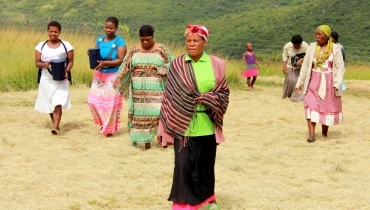The Save the Sand Programme (SSP) promoted the practices of Integrated Catchment Management and Land Care in South Africa, using the Sand River Catchment as a test case. The objective was to address the rehabilitation of the Sand River and its tributaries in a holistic manner through effective and integrated catchment management.
 The main themes of our National Water Act (1998) namely sustainability, equity and efficiency and the management of water on a catchment basis, have been adopted towards land and water management in the Sand River.
The main themes of our National Water Act (1998) namely sustainability, equity and efficiency and the management of water on a catchment basis, have been adopted towards land and water management in the Sand River.
Catalysed by the 1992 drought, the SSP arose out of a precarious water security situation in the Sand River Catchment. A detailed feasibility study revealed that many of the problems could be ascribed to inappropriate and unsustainable land and water-use practices. The impacts were widely felt by downstream users and notably, by the rural poor. These problems highlighted the need for a new approach that makes clear the links between land and water.
A simplistic technical orientation to water management is naïve and has been shown to be ineffectual in the Sand River Catchment. Innovative technologies or engineering strategies cannot be implemented in a socio-cultural vacuum. The SSP has had to grapple with many fragmented and failed attempts at ‘improving’ water services and water resource management. One of the key contributing factors appears to be the exclusion of people involvement in the innovations.
Although a fair percentage of stakeholders residing in the Sand River Catchment accept the importance of consultation, there are others who do not. This may be for a number of reasons ranging from political affiliation to financial benefit. That water related problems in the catchment are part of a set of wider socio, political, economic and biophysical factors is not widely accepted, with the consequences that the SSP has allocated considerable time, effort and financial resources to raising awareness of interrelatedness of some of the issues at hand.
An integrated orientation requires the cooperation and participation of the various stakeholders, decision makers and residents of the catchment in various levels of water resource management. Certainly not all aspects of the water management process requires that ALL stakeholders are actively involved but it is important that they understand the underlying concepts in order engage with the discussions and debates affecting their daily lives. Improved lines of communication, shared concepts and understanding and improved systems of involving stakeholders in participatory water resource management process are the biggest challenges facing an integrated catchment initiative such as the SSP.

